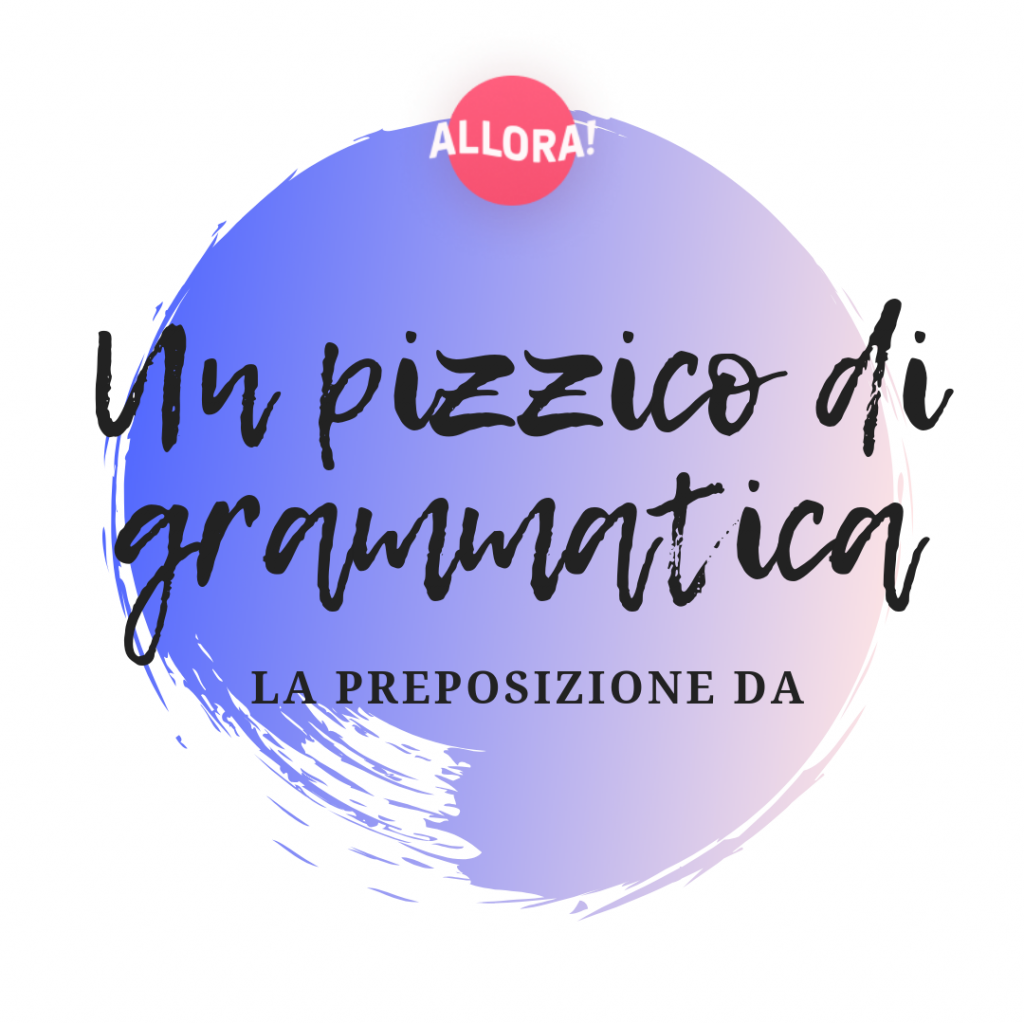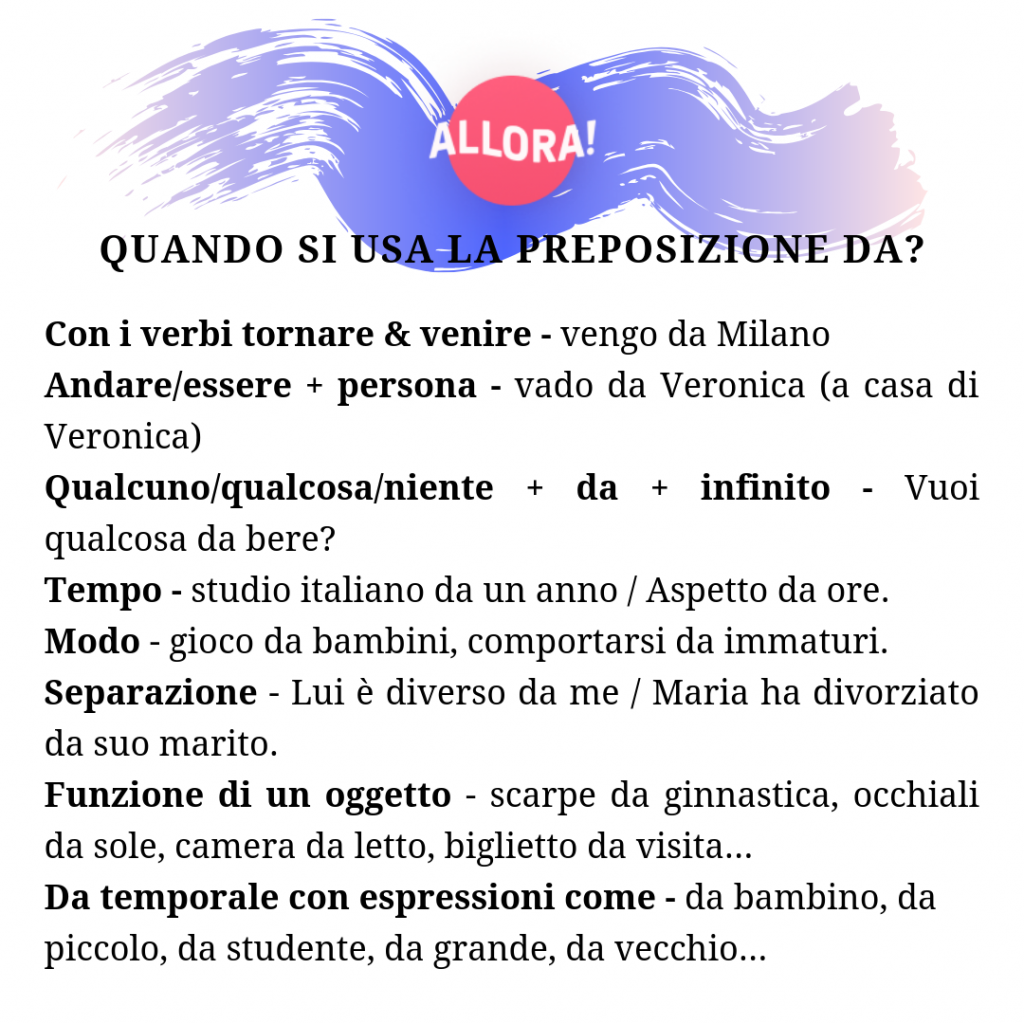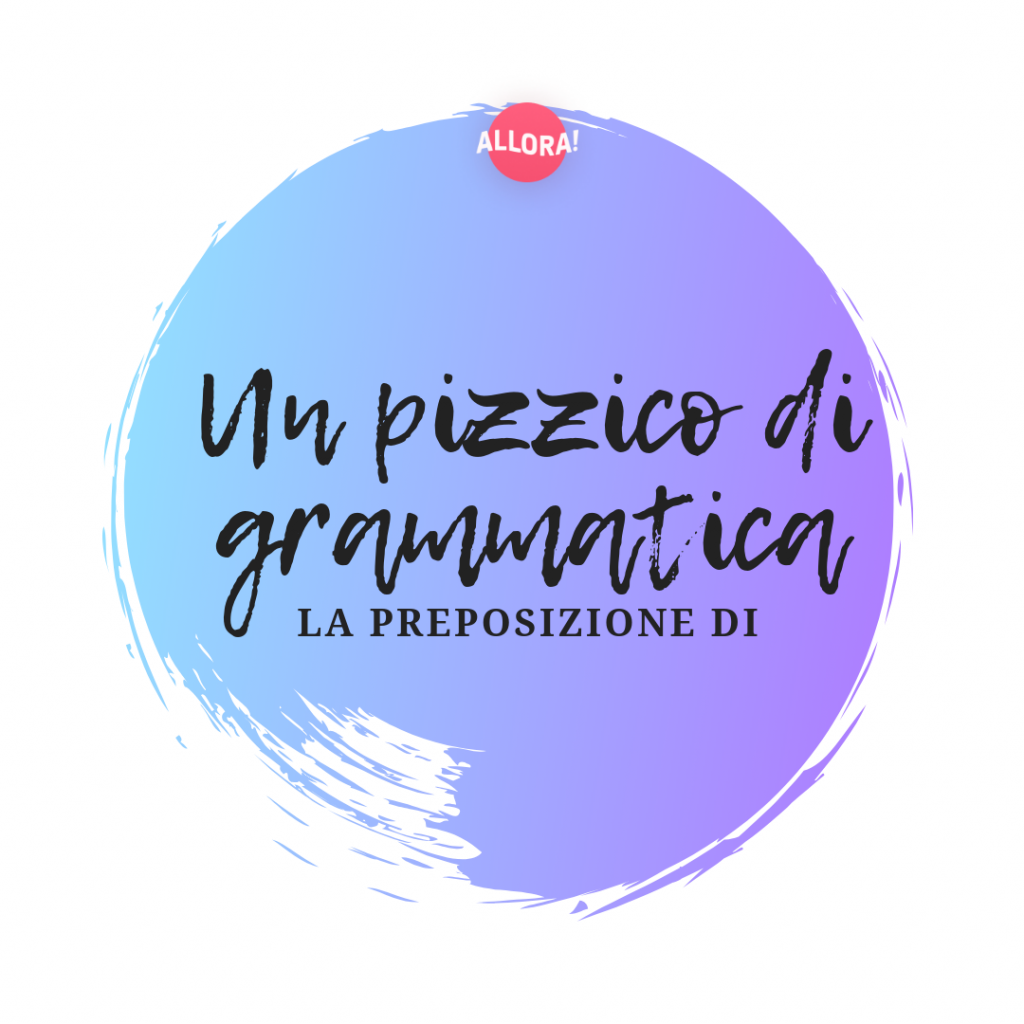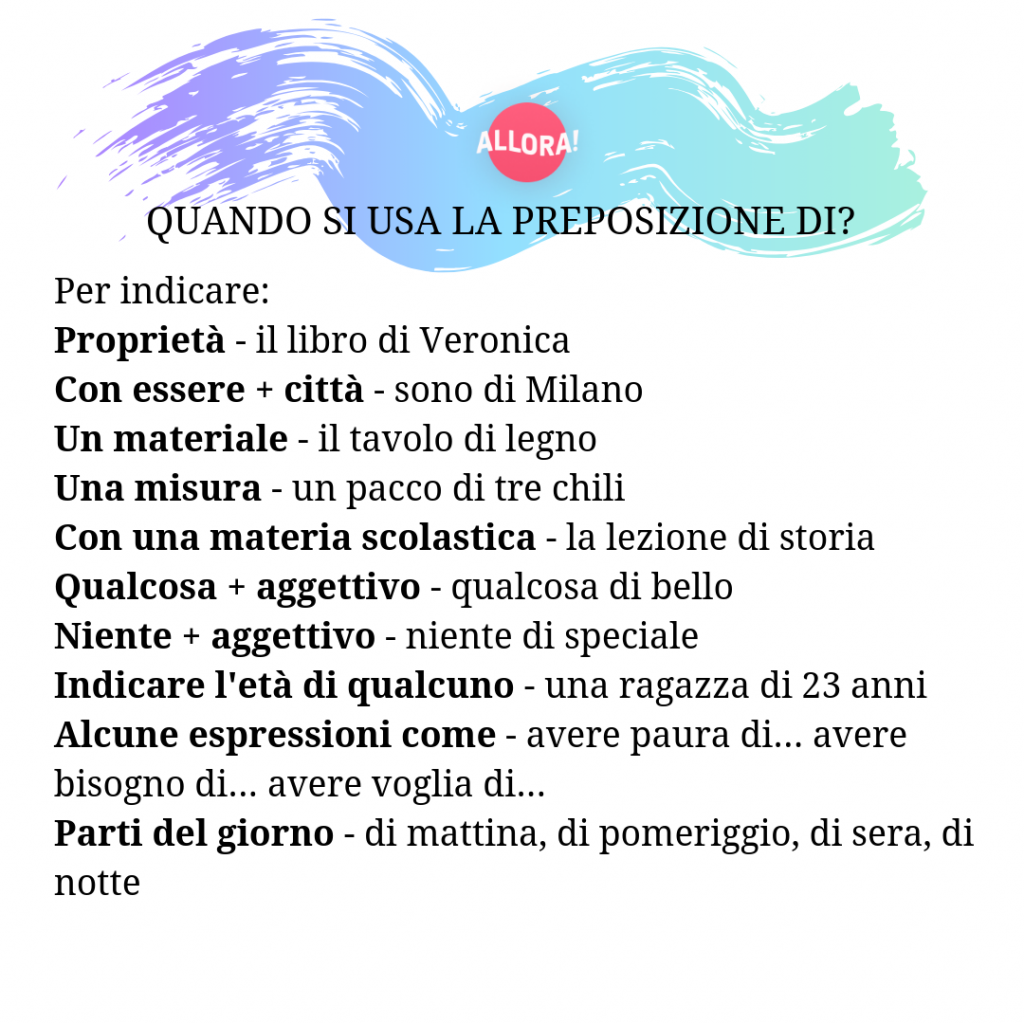

The main meaning of DA is from, but can be translated as to, since and at.
We use DA when we’re at someone’s place: “Siamo da Maria”, “Vieni da Luigi” – we use it with professionals too (but in this case you’ll need to use an articulated preposition) for example: “vado dal dottore”, “Sono dal meccanico” and so on.
Another use is for prices/value -> una giacca da 500 euro (a 500 euro jacket), una banconota da 10 euro ( a 10 euro note).
Some more words that by default contain the preposition da: tazzina da caffè, macchina da scrivere, sala da tè, costume da bagno, macchina da cucire, ferro da stiro, cane da guardia, carte da gioco, pista da ballo, campo da calcio, spazzolino da denti, borsa da viaggio, schiuma da barba, carta da parati, crema da giorno, tuta da lavoro…


“Di” can mean: of, from, by, about, than.
DI is used with:
- Possessions
- Verb to be + city
- Material
- Measure
- School subject
- Qualcosa (something) + adjective
- Niente (nothing) + adjective
- Telling the age of someone else
- Some expressions like “to be scared of” “to need” “to feel like”
- With parts of the day like: in the morning (or during the morning), in the evening, at night etc..
And a few more uses:
- Topic: parliamo di storia (let’s talk about history)
- Author: la Gioconda di Leonardo / “I promessi sposi” di Manzoni
- Movement: di qui (over here), di là (over there), di sopra (upstairs) , di sotto (downstairs)
- Comparison: questo gelato è più buono di quello (this Ice-cream is better than that one)
We have a couple of common idioms as well: di bene in meglio ( go from strength to strength), di gran lunga (by far), di male in peggio (from bad to worse).
Per praticare queste due preposizioni, ecco qui un esercizio per voi! 🤩🤩